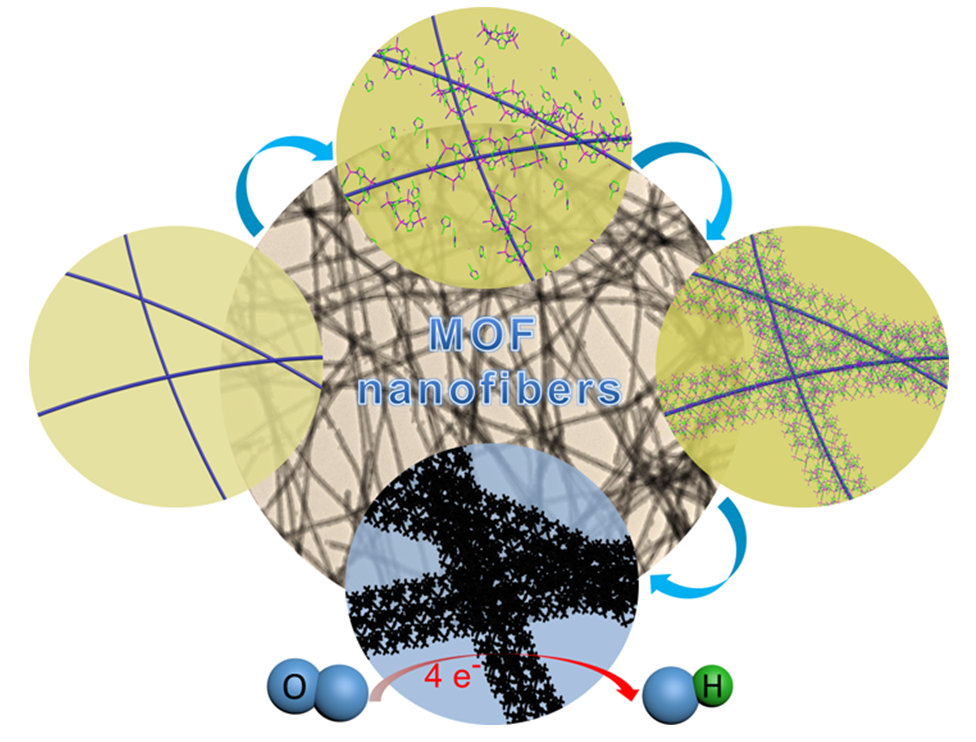Significant advances in constructing higher-order metal organic framework (MOF) superstructures for each dimension have been achieved over the past few years. The hierarchically structured MOF architectures based on the assembly of MOF nanoparticles exhibit enhanced overall performance compared to those displayed by individual nanoparticles and bulk materials. The MOF assemblies composed of nanocrystals as building blocks in one dimension (1D) remain largely unexplored. To this end, Prof. YU Shu-Hong and his research group from the University of Science and Technology of China (USTC) proposed a nanowire-directed templating approach to prepare high-quality MOF nanofibers and then derived doped carbon nanofibers. The results have been published on Sept. 22th in the Journal of American Chemical Society (J. Am. Chem. Soc. 2014, 136, 14385-14388).

Researchers chose ultrathin tellurium nanowires (TeNWs) with excellent dispersivity to induce growth and assembly of ZIF-8 nanocrystals (one typical MOF), resulting in the formation of uniform ZIF-8 nanofibers. Furthermore, by regulating the concentrations of MOF precursor, the diameter of ZIF-8 nanofibers can be well-tuned from 27 to 73 nm corresponding to the size of assembled ZIF-8 nanocrystals. They employed these ZIF-8 nanofibers as carbon source to conveniently prepare highly porous doped carbon nanofibers by calcination.
To demonstrate the superiority of this new kind of nanostructures, Yu’s team introduced such porous doped carbon nanofibers for application in fuel cells as electrocatalyst for cathode oxygen reduction reaction (ORR). Compared with bulk porous carbon by direct carbonization of MOF nanocrystals, these doped carbon nanofibers exhibit better electrocatalytic performance. Further doped by phosphorus (P) species, researchers found that the co-doped carbon nanofibers exhibit high ORR activity with an onset potential of ~ -0.07 V and half-wave potential of ~ -0.161 V, which is even better than the benchmark of the commercial Pt/C catalyst. Such nanowire-directed templating synthetic route will offer new opportunities for rational design and synthesis of diverse MOF nanocrystal assemblies and their derived porous carbon or metal oxide materials by using other functional MOFs, which will show great potential for applications in energy conversion and storage, and design of high performance catalysts.
The research project is sponsored by the National Basic Research Program of China, the National Natural Science Foundation of China and the Chinese Academy of Sciences.
(HFNL, School of Chemistry & Materials).